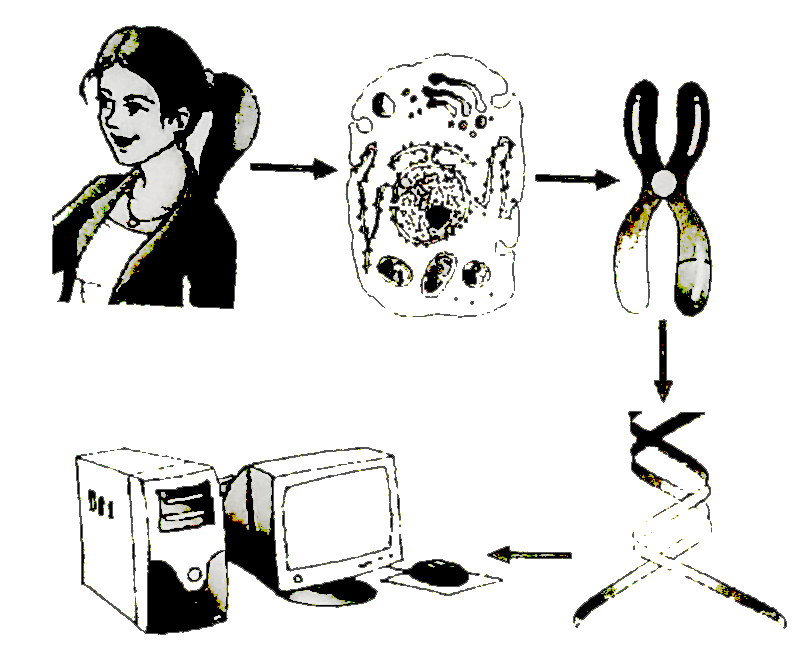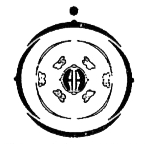With the help of a diagram, illustrate the soil profile.
Step-by-Step Solution to Illustrate the Soil Profile
1. Understanding the Soil Profile:
- The soil profile is a vertical section of the soil that shows the different layers, also known as horizons. Each layer has distinct characteristics and composition.
2. Identify the Layers of the Soil Profile:
- The soil profile consists of several layers, typically labeled as O, A, E, B, C, and R. Each of these layers has unique properties.
3. Draw the Diagram:
- Start by drawing a vertical rectangle to represent the soil profile. Divide this rectangle into five sections, each representing a different horizon.
4. Label Each Layer:
- From top to bottom, label the layers as follows:
- O Horizon: This is the top layer, rich in organic material, dark brown in color, containing decomposed leaves and organisms.
- A Horizon: This layer is also known as topsoil, soft and porous, capable of holding water and air, with more organic material than the layers below.
- E Horizon: This layer is lighter in color, where nutrients are leached from the O and A horizons. It has less clay content and is commonly found in forested areas.
- B Horizon: Known as subsoil, this layer is hard and compact, containing less organic material and more minerals like iron oxide.
- C Horizon: This layer consists of weathered rock material, with no organic matter present. It is made up of larger rock fragments.
- R Horizon: The bottom layer, which is the bedrock, hard and compact, composed of various types of rocks such as granite, basalt, and limestone.
5. Add Descriptions:
- Next to each layer in the diagram, write a brief description of its characteristics, such as color, composition, and function.
6. Final Touches:
- Ensure that the diagram is clear and labeled correctly. Use colors to differentiate between the layers for better visualization.
Diagram Example (Text Representation)
OHorizon(OrganicLayer)−−−−−−−−−−−−−−−−−−−−−−−−−−−−−Darkbrown,rich∈organicmaterial(decomposed≤aves,organisms)<p><p>AHorizon(Topsoil)−−−−−−−−−−−−−−−−−−−−−−−−−−−−−Soft,porous,holdswaterandair<p><p>EHorizon(LeachedLayer)−−−−−−−−−−−−−−−−−−−−−−−−−−−−−Lighterνtrient≤aχngours<p><p>BHorizon(Subsoil)−−−−−−−−−−−−−−−−−−−−−−−−−−−−−Hard,compact,conta∈sminerals<p><p>CHorizon(WeatheredRock)−−−−−−−−−−−−−−−−−−−−−−−−−−−−−Noorganicmaer,madeofrockagments<p><p>RHorizon(Bedrock)−−−−−−−−−−−−−−−−−−−−−−−−−−−−−Hard,compactedlayerofvariousrocks
- The soil profile is a vertical section of the soil that shows the different layers, also known as horizons. Each layer has distinct characteristics and composition.
- The soil profile consists of several layers, typically labeled as O, A, E, B, C, and R. Each of these layers has unique properties.
- Start by drawing a vertical rectangle to represent the soil profile. Divide this rectangle into five sections, each representing a different horizon.
- From top to bottom, label the layers as follows:
- O Horizon: This is the top layer, rich in organic material, dark brown in color, containing decomposed leaves and organisms.
- A Horizon: This layer is also known as topsoil, soft and porous, capable of holding water and air, with more organic material than the layers below.
- E Horizon: This layer is lighter in color, where nutrients are leached from the O and A horizons. It has less clay content and is commonly found in forested areas.
- B Horizon: Known as subsoil, this layer is hard and compact, containing less organic material and more minerals like iron oxide.
- C Horizon: This layer consists of weathered rock material, with no organic matter present. It is made up of larger rock fragments.
- R Horizon: The bottom layer, which is the bedrock, hard and compact, composed of various types of rocks such as granite, basalt, and limestone.
- Next to each layer in the diagram, write a brief description of its characteristics, such as color, composition, and function.
- Ensure that the diagram is clear and labeled correctly. Use colors to differentiate between the layers for better visualization.
Topper's Solved these Questions
- SOILBOOK - BETOPPERSCHAPTER - SOILEXERCISE - SUMMATIVE WORKSHEET (DEFINE THE FOLLOWING)
8 Videos
- OUR ENVIRONMENTBOOK - BETOPPERSCHAPTER - OUR ENVIRONMENTEXERCISE - SUMMATIVE WORKSHEET (ANSWER THE FOLLOWING QUESTIONS:)
24 Videos
- STRUCTURE AND FUNCTIONS OF PLANT PARTSBOOK - BETOPPERSCHAPTER - STRUCTURE AND FUNCTIONS OF PLANT PARTSEXERCISE - SUMMATIVE WORKSHEET (ODD ONE OUT)
5 Videos
Similar Questions
Knowledge Check
The given diagram illustrates
 AChromosome walkingBHomoral AnalysisCHuman Genome ProjectDMethod of DNA fingerprinting
AChromosome walkingBHomoral AnalysisCHuman Genome ProjectDMethod of DNA fingerprintingWhich floral diagram best illustrates the floral formula,
 A
A B
B C
C D
D
With the help of a suitable example illustrate palindrome.
View SolutionWith the help of a suitable example illustrate palindrome.
View Solution(a) What is a soap ? Name one soap.
(b) Describe the structure of a soap molecule with the help of a diagram.
(c) Explain the cleansing action action of soap. Draw diagrams to illustrate your answer.
View SolutionWhich of the following diagrams illustrate the relationship among Science, Maths and Biology?

View SolutionDefine the terms:
Soil profile
View SolutionIllustrate the following with the help of suitable diagrams: Leaf of Bryophyllum with buds.
View Solution

